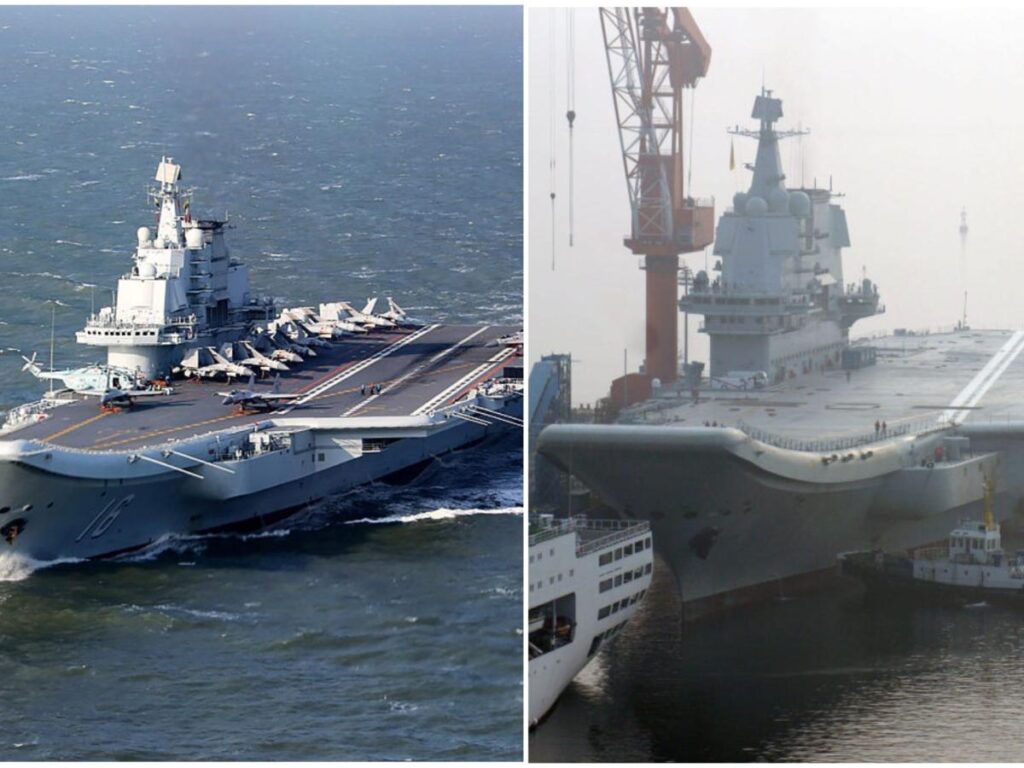A recent satellite image has revealed a remarkable sight: China’s two operational aircraft carriers, the Liaoning and Shandong, docked side by side at the Sanya Naval Base on Hainan Island, located in the strategically significant South China Sea. This rare occurrence followed weeks of military exercises conducted by the carriers in the region. The photograph, obtained by Business Insider through BlackSky, a real-time intelligence company, highlights the presence of the Chinese People’s Liberation Army Navy (PLAN) at a time when tensions in the South China Sea are notably high due to territorial disputes and military posturing by both China and its neighbors.
The Liaoning, China’s first aircraft carrier, was constructed from a decommissioned Soviet-era hull acquired in the late 1990s. Entering service in 2012, it was not declared combat-ready until 2016. Its design shares similarities with Russia’s sole operational carrier, the Admiral Kuznetsov, particularly in its ski-jump style ramp used for launching aircraft. On the other hand, the Shandong, inaugurated in 2019, marks China’s first domestically-produced carrier, which retains many design features from the Liaoning but is notable for being capable of accommodating more aircraft, specifically the J-15 fighter jets that form the backbone of China’s carrier-based air power.
Before their reunion at the naval base, the Liaoning had been active in the Philippine Sea, transitioning from the East China Sea. It participated in complex exercises involving both fighter jets and helicopters in the Western Pacific. Meanwhile, the Shandong had recently completed drills in the South China Sea prior to arriving in Hainan. Several analysts speculate on the potential for dual-carrier operations; however, no definitive plans have emerged, leaving observers curious about the future operational strategies of the PLAN.
The emergence of the Liaoning and Shandong in close proximity underscores the ramping up of naval exercises, which have intensified amidst a backdrop of heightened tensions in the region. China has conducted joint naval drills with Russia, showcasing its military capabilities and increasing its assertiveness in dealings with neighboring countries. This military focus is particularly pronounced in areas of territorial contention, especially around the Scarborough Shoal, where incidents between Chinese and Philippine vessels have escalated recently, including accusations of water cannon attacks by Chinese ships against Philippine supply vessels. Such incidents reflect increasing friction over sovereignty claims in the South China Sea.
Moreover, the growing presence of Chinese naval assets is reshaping the maritime strategic landscape in the region. The PLAN is poised to expand its reach and capabilities further with the anticipated operationalization of its latest aircraft carrier, the Fujian. Unlike its predecessors, this vessel is designed with an advanced catapult launch system akin to that of the US Navy’s next-generation Ford-class carriers, potentially marking a significant leap in the capability and operational flexibility of the Chinese navy.
The backdrop of these developments is a complex interplay between national pride, military capability enhancement, and geopolitical tension. As the PLAN continues to assert itself within the South China Sea, it is also engaging in a broader contest for influence with regional powers and the United States. The fueling of tensions surrounding territorial waters, particularly through confrontational naval actions, highlights the stakes involved in this maritime theater. Moving forward, the presence of the Liaoning and Shandong at the same dock may signal a new strategic phase for China’s naval ambitions, as it seeks to navigate the intricacies of regional rivalries and international maritime law while reinforcing its military posture.

